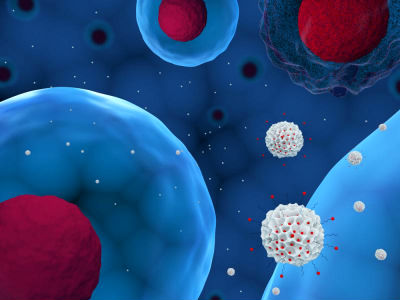|
NOVIDADES
The likelihood of an investigational drug in a Phase 1 trial eventually receiving an FDA approval is only 9.6 percent, according to a recent analysis. At the pre-clinical level, the chances of long-term success are even lower. Incorporating nanotechnology into drug discovery is one possible approach that could increase the odds of success for certain drug candidates, said Marina Sokolsky-Papkov, PhD, director of the Translational Nanoformulation Research Core Facility at the Center for Nanotechnology in Drug Delivery (CNDD) at the UNC Eshelman School of Pharmacy. “It has been shown that nanotechnology is able to address a lot of the clinical development challenges that drug candidates usually face,” said Sokolsky-Papkov in an interview with R&D Magazine. “The whole idea is to take the drug, encapsulate it into a nano-carrier, which will have a different distribution profile, and prevent exposure of the drug over the whole body.”  Drug Delivery Credit: R&D Magazine
To do that they established two core facilities—the Translational Nanoformulation Research Core Laboratory, which promotes translation of new drug candidates into clinical trials through advanced formulation techniques; and the Nanomedicines Characterization Core Facility, which accelerates translation of new nanomedicines to clinic by providing their comprehensive physicochemical characterization. “The goal is to promote collaborative research and to promote interactions between people with clinical vision and expertise and expertise in formulation techniques,” said Sokolsky-Papkov. “This will increase the chances of getting these drugs to the market.” The CNDD is investigating the use of nanotechnology to treat a wide variety of conditions, including cancer, stroke, neurodegenerative and neurodevelopmental disorders, nerve agent and pesticide poisoning and other diseases and injuries. “We use different techniques across the board,” said Sokolsky-Papkov. “Nanotechnology can be used with existing drugs as a way to improve the current formulation or we can take a carrier formulation approach to new drugs out there.” One approach to nanomedicine is to utilize a nanomaterial, such as liposome, as a more effective drug delivery system for an already existing therapeutic. Nanoparticles tend to accumulate in areas that are inflamed, which is often the site of disease, explained Sokolsky-Papkov. During an inflammatory response, the blood vessel barrier often becomes “leaky.” This makes it easier for nanoparticles— equipped with a therapeutic agent to fight disease—to enter. “If you encapsulate your drug in a certain size range, below 100 nanometers, it will be able to penetrate with leaky vessels and target those areas better,” said Sokolsky-Papkov. Nanoformulations also provide an opportunity to improve efficacy of certain drugs, as they can increase the accumulation of the drug at the disease site. This is particularly useful when a drug needs to enter a hard-to-penetrate area, such as the brain. “In our center we have research going on regarding nano-meditated delivery of therapeutic agents for the brain, both small molecule and biologics,” said Sokolsky-Papkov. “We specifically see a significantly higher accumulation of a drug and better efficacy in nanoformulation versus conventional administration systems.” Because nanoformulations are more targeted to the site of the disease, they can also be used to reduce side effects. In conventional drug administration, the therapeutic hits all of the body’s cells and blood vessels at one high dose at the same time. However, with a nanoformulation, the drug is released in a more sustained manner, resulting in lower overall body exposure overtime. This is less toxic to the system, said Sokolsky-Papkov. Several magnetic nanoparticles have been approved for clinical use in imaging. The benefits are similar to those seen in nano-drug delivery, said Sokolsky-Papkov. “This uses the same idea that in areas associated with inflammation the accumulation of an imaging agent will be higher in an inflamed area compared to normal tissue when using nanoparticles” she explained. “Basically these nanoparticles will be labeled so that they can be tracked using standard imaging techniques.” During an MRI, magnetic nanoparticles interact with the magnetic field and can be tracked by observing where the image turns darker. This allows for a comparison before and after accumulation of nanoparticles to identify possible disease “If you see a lot of accumulation in these areas there is something potentially going on,” said Sokolsky-Papkov. The field of nanomedicine is rapidly advancing, said Sokolsky-Papkov. “The clinical models to evaluate the efficacy of nanomedicines are improving over time,” she said. “There is a lot of research and effort going to improve pre-clinical evaluations to increase collaboration between pre-clinical and clinical data, which significantly improves the chances of nano-medicines hitting the market. The number of clinical trials for different nanoformulations is increasing significantly each year.” By Laura Panjwani. R&D Magazine. Posted: Feb 23, 2018. |
|||||||||||||||||||||||||